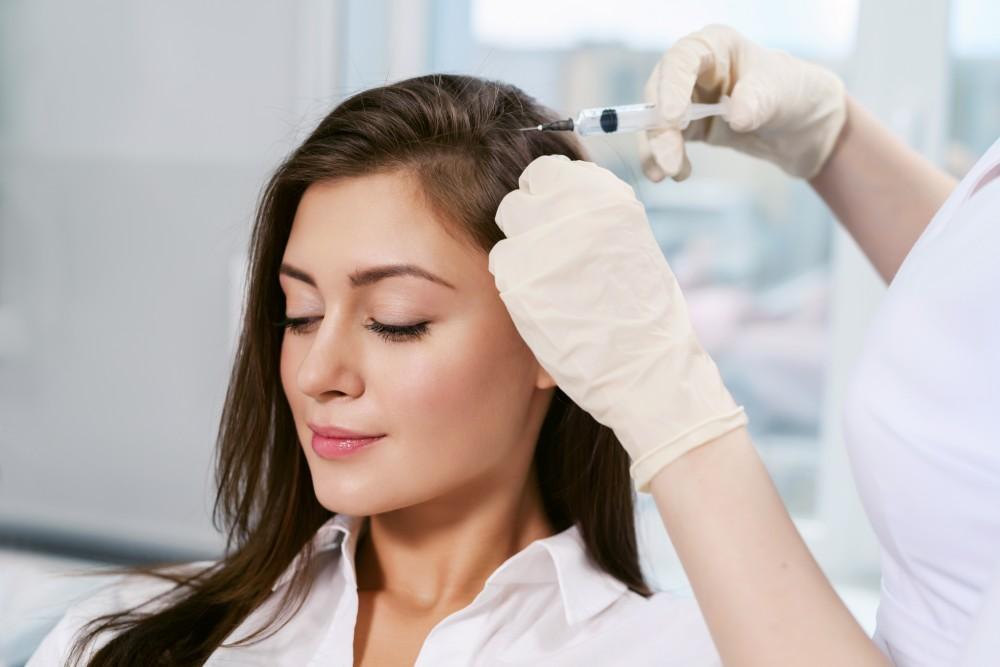Hair loss is a widespread concern affecting millions of men and women worldwide. Whether it’s due to genetics, aging, hormonal changes, or medical conditions, losing hair can severely impact one’s self-esteem and confidence. Fortunately, advancements in science and medicine have led to multiple hair restoration options — both surgical and non-surgical — that can effectively treat hair loss.
If you’re considering hair restoration, it’s crucial to understand your options, the procedures involved, costs, risks, expected results, and long-term maintenance. This comprehensive guide will walk you through everything you need to know before starting hair restoration, helping you make an informed decision.

What Is Hair Restoration?
Hair restoration refers to medical and cosmetic procedures designed to regrow, replace, or restore hair in areas affected by hair thinning or baldness. These solutions can range from over-the-counter products and medications to surgical interventions like hair transplants.
Common Causes of Hair Loss
Understanding the cause of your hair loss is the first step toward selecting the right treatment. Common reasons include:
- Genetic predisposition (Androgenetic Alopecia)
The most common type, also known as male or female pattern baldness. - Hormonal imbalances
Conditions such as PCOS or thyroid disorders can lead to hair thinning. - Stress and lifestyle
Poor diet, high stress levels, and lack of sleep can cause temporary hair loss (telogen effluvium). - Medical conditions and medications
Autoimmune diseases, chemotherapy, and certain drugs can trigger hair loss. - Nutritional deficiencies
Lack of iron, biotin, or vitamin D can lead to hair weakening and shedding.
Types of Hair Restoration Treatments
There are several types of hair restoration treatments, broadly categorized into non-surgical and surgical options.
1. Non-Surgical Hair Restoration
These are the first lines of treatment for mild to moderate hair loss.
a. Topical Treatments
- Minoxidil (Rogaine)
An FDA-approved over-the-counter topical solution that promotes hair regrowth by increasing blood flow to hair follicles.
b. Oral Medications
- Finasteride (Propecia)
A prescription pill for men that blocks DHT, a hormone responsible for hair follicle shrinkage.
c. Laser Therapy
- Low-Level Laser Therapy (LLLT)
Uses red light to stimulate hair follicles and increase hair density.
d. Platelet-Rich Plasma (PRP) Therapy
A popular non-surgical treatment where a patient’s blood is drawn, spun in a centrifuge to extract platelets, and then injected into the scalp to boost hair growth.
2. Surgical Hair Restoration
Surgical hair restoration is generally recommended for patients with significant or permanent hair loss.
a. Follicular Unit Transplantation (FUT)
- Also known as the “strip method”
- A strip of scalp is removed from the back of the head and dissected into individual grafts
- Leaves a linear scar but allows for large sessions
b. Follicular Unit Extraction (FUE)
- Hair follicles are extracted one by one from the donor area using tiny punches
- Less invasive, no linear scar, and faster healing time
- Suitable for those who prefer short hairstyles
c. Robotic Hair Transplant (ARTAS)
- A highly precise robotic system assists in harvesting and implanting follicles
- Reduces the margin of human error
Authoritative Medical & Research Resources
- American Academy of Dermatology Association (AAD) – Hair Loss Resource
https://www.aad.org/public/diseases/hair-loss - National Institutes of Health (NIH) – Hair Loss Overview
https://medlineplus.gov/hairloss.html - Mayo Clinic – Hair Transplant Information
https://www.mayoclinic.org/tests-procedures/hair-transplant/about/pac-20384757 - Harvard Health Publishing – Treatments for Hair Loss
https://www.health.harvard.edu/newsletter_article/treating-hair-loss - Cleveland Clinic – Platelet-Rich Plasma (PRP) Therapy for Hair Loss
https://my.clevelandclinic.org/health/treatments/17838-platelet-rich-plasma-prp
Who is a Good Candidate for Hair Restoration?
Not everyone experiencing hair loss is an ideal candidate for hair restoration surgery. Consider the following:
Ideal Candidates:
- Men with male pattern baldness
- Women with thinning hair
- Individuals with stable hair loss patterns
- Patients with adequate donor hair on the back or sides of the scalp
Poor Candidates:
- Those with widespread hair loss and low donor supply
- People with certain scalp conditions or keloid scarring tendencies
- Individuals with unrealistic expectations
Consultation: What to Expect
Before starting your hair restoration journey, you’ll need to consult with a board-certified dermatologist or hair restoration specialist. A typical consultation includes:
- Scalp analysis: Using tools like dermatoscopes or trichoscans to analyze hair density and follicle health
- Medical history review: Discussing any underlying health issues, medications, or family history of hair loss
- Photographs: Taken to track progress over time
- Treatment plan: Custom-tailored to your needs and goals
Costs Involved in Hair Restoration
Hair restoration can vary greatly in cost depending on the treatment option you choose, location, and expertise of the practitioner.
Cost Breakdown:
| Treatment Type | Estimated Cost |
|---|---|
| Minoxidil/Finasteride | ₹1,000 – ₹2,500/month |
| PRP Therapy | ₹5,000 – ₹15,000 per session |
| LLLT Devices | ₹25,000 – ₹80,000 one-time |
| FUE Hair Transplant | ₹40 – ₹120 per graft |
| FUT Hair Transplant | ₹30 – ₹90 per graft |
| Robotic Transplant | ₹60 – ₹150 per graft |
A full transplant procedure may require 1,500 to 4,000 grafts, so total costs can range from ₹60,000 to ₹4,00,000 or more.
Risks and Side Effects
While hair restoration is generally safe, it’s not without risks:
Non-Surgical Side Effects:
- Scalp irritation
- Temporary shedding
- Hormonal side effects (in men using finasteride)
Surgical Risks:
- Infection
- Scarring
- Shock loss (temporary shedding after surgery)
- Poor graft survival
- Unnatural hairline if performed poorly
Always choose an experienced, licensed professional to minimize risks.
Hair Transplant Recovery Process
Here’s what to expect during the recovery and aftercare process:
Day 1–3:
- Mild swelling and scabbing
- Avoid touching, scratching, or washing the scalp
Week 1:
- Start gentle scalp washing with prescribed shampoo
- Most redness and swelling reduce
Week 2–4:
- Temporary hair shedding (shock loss)
- Follicles enter resting phase
Month 3–6:
- New hair begins to grow, but thin and soft initially
Month 6–12:
- Noticeable growth
- Hair becomes thicker and more natural-looking
Results: What to Expect
Hair restoration results vary based on the type of treatment, the skill of the provider, and individual biology.
- Topical/oral treatments: Slow progress, visible effects in 4–6 months
- PRP therapy: May need 3+ sessions for visible improvement
- Hair transplant: Final results visible in 9–12 months
Results are usually permanent in transplanted areas, but ongoing care is needed to maintain surrounding hair.
Long-Term Maintenance and Hair Care
Even after restoration, maintaining hair health is critical. Here are some key tips:
Post-Treatment Maintenance:
- Continue using minoxidil or finasteride (if recommended)
- Attend follow-up appointments
- Consider PRP or laser therapy boosters every 6–12 months
Daily Hair Care:
- Use sulfate-free, gentle shampoos
- Avoid heat styling tools and harsh chemicals
- Eat a balanced diet rich in iron, zinc, protein, and omega-3s
Choosing the Right Clinic and Surgeon
The success of your hair restoration heavily depends on your choice of clinic. Consider the following:
- Board certification and medical license
- Years of experience and specialization in hair restoration
- Before and after photos
- Transparent pricing and clear communication
- Online reviews and patient testimonials
Questions to Ask Your Hair Restoration Doctor
Prepare these questions before your consultation:
- Am I a suitable candidate?
- What are the expected results for my case?
- What techniques do you recommend and why?
- How many procedures have you performed?
- What are the costs and payment plans?
- What’s the recovery time?
- What if I’m not satisfied with the results?
Final Thoughts: Is Hair Restoration Right for You?
Hair restoration is a personal journey. With a range of effective treatment options available today, both surgical and non-surgical, there’s a solution for almost every type and stage of hair loss. However, the key to success lies in realistic expectations, professional guidance, and long-term maintenance.
Before making a decision, consult a certified hair specialist, evaluate all your options, and weigh the benefits, risks, and costs. Done right, hair restoration can dramatically boost your appearance, confidence, and quality of life.



